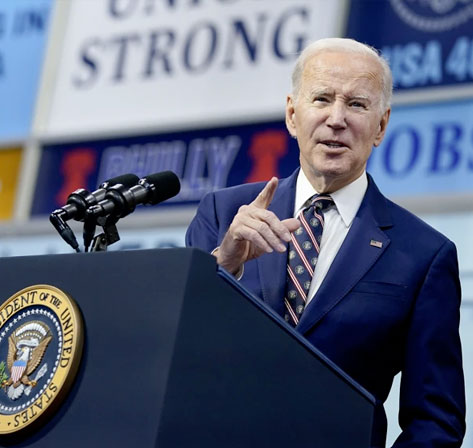October 2023
President Biden’s 2024 Budget Proposal
Region: US
Author: Karen A. Tramontano
On March 9, 2023, President Biden unveiled his 2024 budget proposal in Pennsylvania, a staged event that had not been done in years. The event demonstrates that President Biden is taking his budget conversation directly to the American people and not waiting for Washington to create his budget narrative.
On March 9, 2023, President Biden unveiled his 2024 budget proposal, and he did it in Pennsylvania. Staging a budget event such as this has not been done in years. The event demonstrates that President Biden is taking his budget conversation directly to the American people—and not waiting for Washington to create his budget narrative.
President Biden’s budget totals $5.8 trillion and it includes $1.6 trillion in discretionary spending. It’s important to note that most of the U.S. budget—about 63%—is spent on mandatory programs such as Social Security, Medicare, and Defense spending which cannot or will not be decreased. The budget projects a $1.2 trillion deficit in fiscal year 2023, but that is a significant reduction in the deficit from the last two years. Going on the offense against House Republicans, President Biden aims to cut the deficit by $3 trillion over the next 10 years. One trillion dollars of the deficit will be reduced by increasing taxes on corporations and wealthy taxpayers—those earning over $400,000, annually. Those tax increases will be directed to shore up programs, including Social Security and Medicare—programs that President Biden has said he will not cut.
Other spending proposals include climate change initiatives that would provide $6.5 billion to rural electricity providers that are transitioning to clean energy and support for energy storage and transmission projects. The budget proposal would increase funding for renewable energy development by almost 150% and allocate $5 billion for climate adaptation.
The budget proposal also seeks $5 billion for President Biden’s proposed new Advanced Research Projects Agency for Health (ARPA-H), which would invest heavily in cancer research as Biden’s previously announced Cancer Moonshot initiative. The budget also asks for $3.5 billion for new mental health funding and it would make mental health on par in Medicare and expand requirements for insurers to provide the same coverage level for mental health as physical care.
Consistent with President Biden’s focus on supply chains and domestic manufacturing, the budget proposal also includes funds to boost the National Institute of Standards and Technology’s (NIST) manufacturing programs to expand domestic manufacturing and ease supply chain woes.
The budget does not include new funding for Covid-19 but does include $6 billion in funding for the war in Ukraine. Finally, there is no mention of the formerly called “Build Back Better” priorities that languished in the Senate when they could not get 60 votes for passage or support from two Democratic Senators, Joe Manchin and Kyrsten Sinema.
In the House of Representatives, the ball is in the Republicans’ hands—whereas in the Senate, next steps will be controlled by the Democrats. We will provide updates as we understand which of these proposals will be able to garner the necessary votes and compromises to be included in year-end funding decisions.
